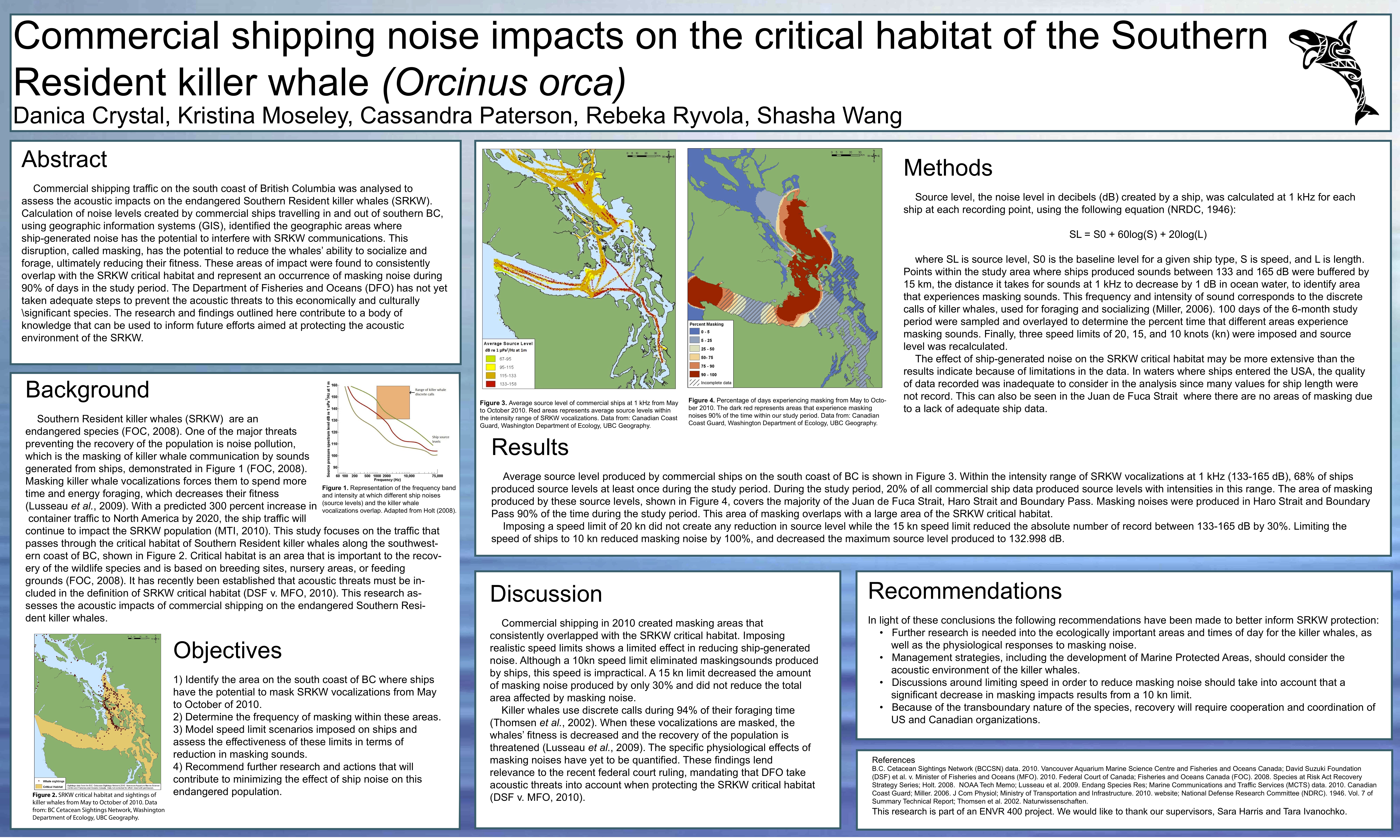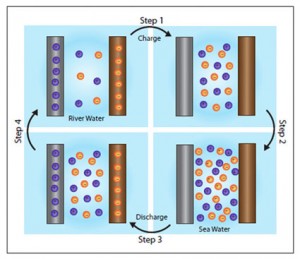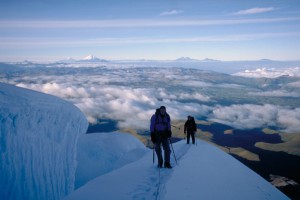I spent much of 2010/2011 working on a research project so thought that I would use this ultimate SCIE300 blog post to tell you all about it.
Last September, myself and four others in UBC Environmental Science were put on team and instructed to research whatever environmental science topic we wanted. We were all broadly interested in researching some sort of ecological impact of the Gateway Program, BC’s massive plan for highway and port expansions. We spent first semester narrowing in on a more specific area. Eventually, we landed our focus on the impacts of increasing commercial shipping traffic on the Southern Resident killer whales (SRKW). This population is designated as endangered by the Species at Risk Act and has been in decline over the past several decades.
This semester, we went into a research paper-reading frenzy on everything and anything to do with killer whales, ships, and killer whales and ships in order to find a manageable gap in the understanding of commercial ship impacts on the SRKW we could work to fill. We soon found that the influence of commercial shipping sound in the SRKW critical habitat — area identified as especially important for the well-being of this species — is little understood.
Also at around this time, a lawsuit led by several environmental groups against the Department of Fisheries and Oceans (DFO) was in the midst of unfolding. Team Enviro had taken DFO to court for failing to protect the SRKW critical habitat (which DFO is legally obliged to protect), and in December 2010, the court ruled against DFO. Noise pollution — along with food availability and toxic pollution — were among the key areas DFO was found to be failing to address. So, knowing that DFO might be considering doing a better job of safe-gaurding the critical habitat, we wanted to conduct research that could inform recommendations to lessen noise impacts on the SRKW.
We got to work using GIS analysis to map out areas of sound influence in the SRKW habitat, identifying spots where the killer whales’ ability to communicate was compromised. In addition, we mapped out noise pollution scenarios under different ship speed limits to see whether the noise level decreased significantly.
In the end, we found that noise pollution is omnipresent in the SRKW critical habitat; the whales are almost never freed from some sort of interference in their communication calls. Additionally, we found that no realistic speed limit reduces noise significantly. What does this mean for the SRKW? Mostly, our research reiterates that DFO has done a poor job in protecting the home of this endangered species. However, we believe that future research into alternate shipping routes and identification of specific months or times of day for shipping that avoid critical killer whale feeding and breeding times and areas could lead to successful SRKW protection.
See our blog for more info on our project:-)






